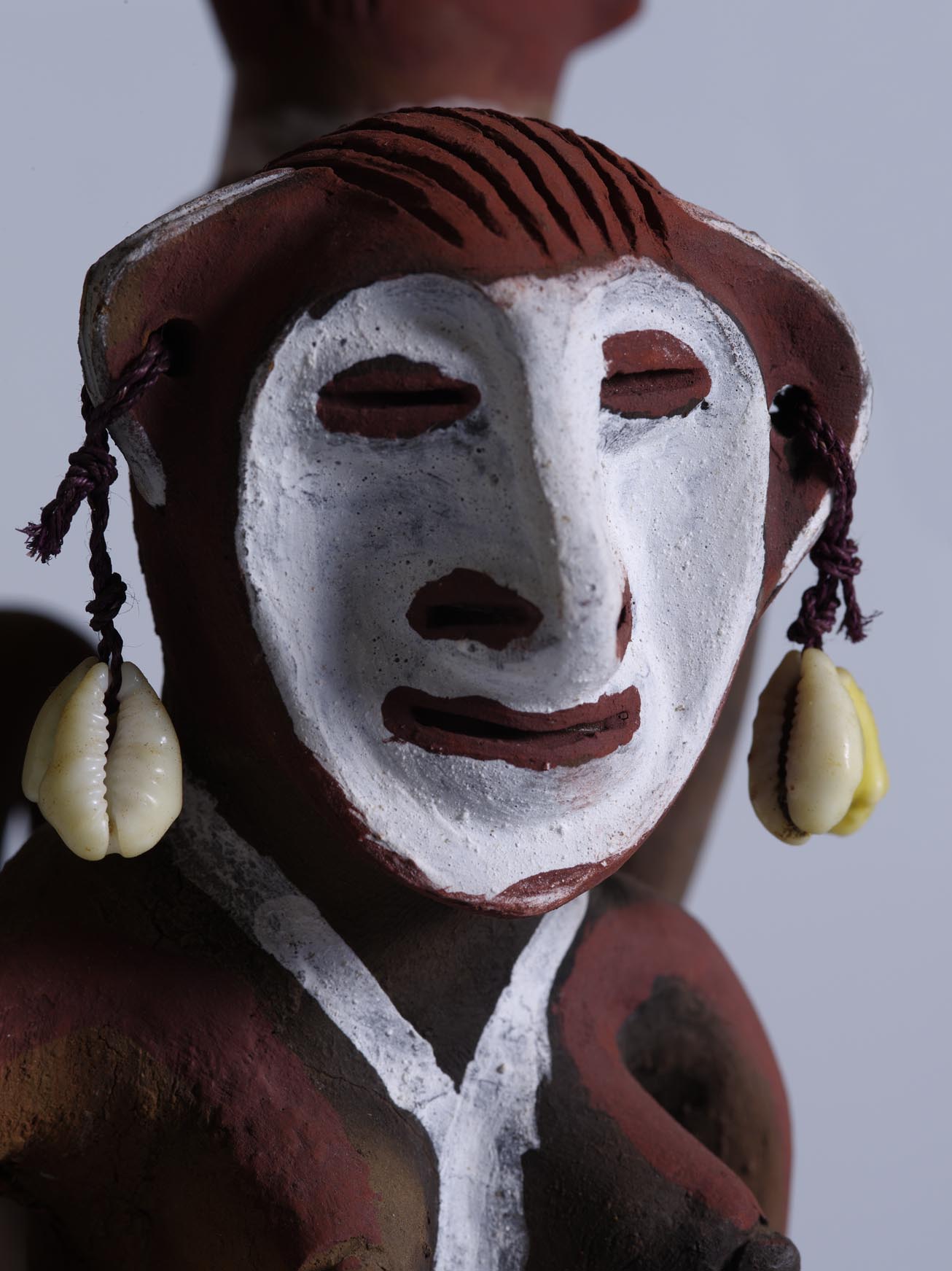Online exhibition 27 September 2012
Curated by Diana Young and photography by Carl Warner
Objects with faces are compelling. For this exhibition, connected to the launch of the UQ Anthropology Museum’s online catalogue we photographed the selected items, mostly sculptures, as mug shots with the flat lighting of a passport portrait or a police ID image. Then we used high contrast lighting to animate them, using what Carl Warner the project photographer calls ‘celebrity tricks’; flattering top down camera angles, to avoid double chins, for example. The high contrast lights gave some surprising results, enhancing the expressiveness of the faces as firelight or candles might. The portraits in this series imply that there is a relationship or a narrative of which you are already a part. Their direct gaze insists on some sort of attention. What are they looking for, what are they looking at?

The title of this show What do objects want? alludes to art historian W.J.T. Mitchell’s writing. Mitchell’s ‘pictorial turn’ suggests that it is about time we stopped asking what images can do for us, and instead that we start asking ‘What do pictures really want?’ (1996). By treating images in this way we might, Mitchell implied, escape from the seeming inevitability of writing their histories with evidence derived ‘by other means’ (Pinney 2006;137). The same then might be said for things in a museum collection each of which has its own requirements.
Museum collections eventually outlive all the people originally associated with them. They outlive their makers, users, traders, buyers, collectors and curators. This, often unknown, past life contributes to a museum object’s aura, its power or capacity to enchant. Equally a collection can be a drain on energy, become replete with nostalgia, poignancy, or the vehicle for remembering, as its material presence crumbles or fades.
Digitized museum catalogues offer collection items a chance of renewal, an opportunity to participate in new networks and political economies (and perhaps mediate cultural renewal) via their newly created immaterial forms. The conventional photograph of ‘ethnographica’ in a museum collection that you see often in books for connoisseurs is the ¾ rotation, rather like a formal studio portrait of a person, so that the subject is objectified. Any confrontational power that it had is erased. Museum catalogue photographs of collection items follow this code and the resulting images are often as neutral and impersonal as possible. How can we approach these objects on their own terms and return to them at least some of their agency so that we ask less about what they mean and more about what they want?
This exhibition can be found in the Museum’s online catalogue using basic search term What do objects want?
References
Mitchell, W. J. T. 1996 ‘What do pictures really want?’ October 77:71-82
Pinney, C 2006 ‘Four types of visual culture’ in The Handbook of Material Culture, Sage, London and Thousand Oaks, pp 131-144
